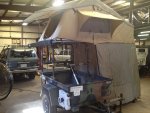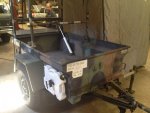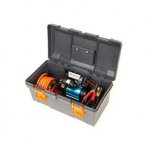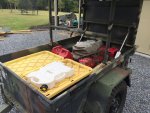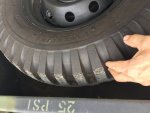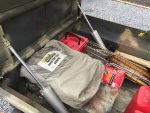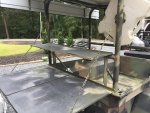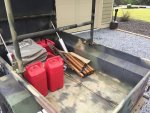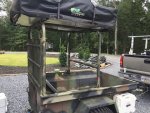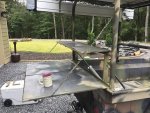General Automag
Adventurer
For sale:
M416 ¼-TON MILITARY OFF-ROAD EXPEDITION TRAILER WITH AIR-LIFT ROOF TOP TENT $5,200 neg.
This is a simple and very functional design that you've probably never seen before. We built this "expedition" off-road capable trailer after a lot of thought and planning. We looked at many other "Jeep," military, and "expedition" trailers and even off-road popups and campers.
-First, we decided that we didn't want to spend $15K-$30K on a trailer, which is what we found after studying the various trailer manufacturers' designs.
-Second, we wanted a very tough and maintenance-free trailer that we could take off road.
-Third, we wanted something gave us options for future customization.
-Fourth, we wanted a true "bug out" trailer; we can keep all of our gear and more stored in the trailer, so if we do have to get out of town due to a natural disaster or emergency, then we just need to get our clothes and food and hook up the trailer and go.
Last, we wanted something that will hold its value and be easy to resell if we had the need.
Problems with roof top tents (RTT) mounted on trailers:
We really liked the idea of a RTT on top of a smaller trailer, but we found several problems. First, if you mount your RTT on a lid or cap for the trailer, then you cannot access your trailer once you erect your RTT. This means you have to take EVERYTHING out of your trailer that you could possibly need, and this didn't work for us. We also get a lot of rain and wind here in the southeast, so a RTT on a lift-up trailer lid/cover was not ideal.
Next, we looked at the permanently mounted bars that elevate the RTT on some off-road trailer designs. The problem with this setup is that you cannot use your annex room because the RTT is not high enough off of the ground. Another problem we saw was increased wind resistance and trail clearance when you have a permanently high-mounted RTT on an off-road trailer. Having a RTT elevated really does decrease your mileage, and a higher mounted RTT really does tend to catch branches and tree limbs when you do drive off road.
Elevated design considerations:
We looked at many designs included fixed raised platforms, lid designs, and straight up and down struts to raise the RTT so it would be high enough to use the annex room. One requirement was that the RTT would need to be easily raised and lowered, not only by me but by my wife. We looked at mechanical and electrical actuators that raise and lower the RTT, and after seeing several prototypes and camping out in different designs, we decided to use air to raise and lower the RTT.
Most everyone carries portable or onboard air, so we decided to go that route. Electrical actuators are nice, but batteries are heavy, terminals erode, wires break, and well, electrical modifications tend to get expensive and complicated.
Trailer choice:
We looked long and hard for a smaller ¼-ton military trailer. We looked at M100s, M101s, and even the larger M1101 and M1102 Humvee trailers (they are just too tall and too big for our needs). We looked at Harbor Freight and other custom trailer conversions, but these are made for off-road. We looked at many trailer manufacturers and read many cool threads on custom home-built trailers.
While all of these could suffice, we wanted a trailer that was already proven and trail tough.
We found an original, one-owner, unmodified, unmolested, and rust-free M416 military trailer. It's an original Marine Corps trailer made in 10/83, and it had the military CARC (chemical agent resistant coating) applied in 03/89. If you see any "flakes" of paint on the trailer, it's not rust from paint coming off; it's the CARC coating. CARC is applied in layers and does peel off sometime. When the CARC does peel, you will see the original paint underneath. The CARC is painted in the same camo pattern as the trailer. Another benefit about the camouflage paint job is that if you ever do have a scratch, just pick the same color of Rustoleum camo paint and touch it up.
Another benefit that is often overlooked is a hand brake. Many "expo" off-road trailers don't have a hand brake, and when you decouple the trailer from your vehicle, you have to use wheel chocks to keep the trailer from moving. Having a hand brake makes the trailer very stable and keeps it from moving, especially if you are on uneven or sloped ground.
The M416 trailer was ready to go as-is, so we hooked it up and off to home with us it went. In addition, we wanted something that we could sell later should we have to move or if our family and camping situation changed, like now .
.
Wheels and tires:
We first thought about replacing the wheels and tires to match those of our vehicle. Hmm... what if you change vehicles or use a different vehicle with a different hitch height? We decided to keep the original military tires and wheels. It was less expensive than buying new wheels and tires, and we didn't have to swap out any axles or hubs. We did replace and grease all of the hubs and bearings, and we replaced both tires and tubes with new tires from Mitchell Tire (a great source for military and hard-to-find tires). 'Not inexpensive tires by the way. We took the best of the two tires original tires to use as a spare. We replaced the tube, balanced it, and mounted it under the trailer.
FYI, the first set of tires, if they were made when the trailer was built, lasted 34 years! This is another reason that we didn't get new wheels and tires. I've never had any tires that lasted that long, so we decided a new set would last another 30+ years. The original two tires had small dry rot cracks on the sidewall and we could have used them, but it's just good practice and insurance to have good tires. I never want to be that guy with a trailer broke down on side of the road with no spare and a busted up axle.
We also wanted the trailer to remain stock, and the original tires look good. They actually do a great job on the pavement and on the trail.
If you are worried about trailer height or have a lifted vehicle, then you can simply do an axle spring-over if you need more ground clearance or tongue height. We saw several military trailers at the Overland Expo East with spring-overs, and those trailer owners said that they had no problems with that setup.
Trailer modifications:
All of the fabrication work was done by ACC Garage (ACC Toyota Lexus and Land Cruiser) in Atlanta, Georgia (www.accgarage.com - feel free to give them a ring if you have any questions or need them for their great fabrication work or if you're looking for the best Toyota/Lexus mechanics around). You can also see some of the other trailers that were the inspiration of this design at https://forum.ih8mud.com/threads/exp...-build.330173/.
1. We removed the "landing leg" which is the fold-down piece on the front that keeps the trailer tongue from hitting the ground and replaced it with a more usable crank type trailer jack (we still have all original parts).
2. We used the existing lights but switched them for 12-volt use using a standard 4-pin trailer plug (easy to put back to 24-volt if you're a military collector or want a completely 100% stock trailer)
3. We added a Toyota winch type spare tire hoist which carries a full-size spare directly under the trailer (if you don't like a spare tire in this location, then simply remove the spare tire and mount it on the rear or side of the trailer).
4. We added two (2) outriggers (crank handle stabilizers) in order to stabilize the trailer once you open your RTT. One of the stabilizers is on the driver's side, and the other is at rear of the trailer. These are simple crank type stabilizers and are very easy to use. Even on a trailer with a RTT mounted on the lid, your trailer will shake a lot simply by rolling over in your sleeping bag if you don't have any type of stabilizers. Look at any camper or popup, and you will see stabilizers being used because they are needed.
5. We added two (2) pneumatic (air) cylinders in the tub in order to raise the frame that holds your RTT.
Every modification made was very minor and fully thought through. We wanted to be able to easily take the trailer back to all-original position, and we have the landing leg, original wire connector plug, and original chains that came with the trailer.
Roof Top Tent and Annex Room:
The RTT and annex room is made by IronMan4x4 of Australia. It's a full size roof top tent with the standard queen-size mattress layout and not the smaller compact ones. We are family of three, and we've slept with the two adults and sometimes with two adults and a child in the middle. If I remember correctly, the RTT and annex room cost us around $1,800. Here is the link: http://ironman4x4.com/products/roof-...ftop-tent-only
http://ironman4x4.com/products/roof-...ent-annex-only
The annex room is really handy and adds a LOT more utility to the RTT. You can change clothes in it, put your porta-potty in it, and we've even put a cot in it for extra sleeping room. We mostly always use the RTT with the annex room. It keeps your gear dry and out of the sun, and it keeps out bugs. For our family, it simply adds more room for storing our gear and gives us privacy to change clothes and such, especially if you are at an expo event or other large gathering.
The IronMan4x4 annex room has a zip-in rubber floor. Many of the other RTT annex room don't have this feature. The zip-in rubber floor keeps any rain and mud out of your tent and is super easy to zip-on and fold up when you're done. FYI, we usually leave the annex room attached to the RTT when we fold it up for storage, but if you're a solo camper or just want an even faster setup, then you can leave it unattached. It has a separate storage bag.
How to operate the RTT lift:
1) Simply plug in your air source to the valve on the driver's side of the trailer. The cylinders take about 3-4 seconds of air from our air compressor. We carry a portable ARB "toolbox" compressor, and a lot of people have onboard air already. If you don't have air, as you should if you off-road or do any serious wheeling or traveling, then we highly recommend the ARB portable compressor (14 years of service with no problems).
2) Remove the black RTT cover and raise the tent about ½ height. This allows you to attach the wire rods that hold open the RTT window flaps. You don't have to do this, but once the RTT is raised to its fullest height, then you may have a hard time if you're a short person.
3) After you raise the tent to full height, and simply secure the two (2) lever latches. Although not needed, these will keep the tent frame from lowering and gives the wife and extra sense of security that the tent won't fold down.
4) Now you can attach the annex room. You can leave the annex room attached to the RTT, or you can run your RTT with the annex room unattached. It saves setup time if you leave it attached, but if you're solo camping or don't need the extra room and privacy of the annex room, then you can leave it off.
That's it! It's a very simple and uncomplicated setup. Please see the pictures for the RTT in various positions being elevated.
Other considerations and design features:
Fold-down built-in cooking shelves:
Notice that there are two (2) shelves that you can fold down when the RTT structure is elevated. This is just a kick-*** design that is simple and works well.
Machine cover:
Although we store the trailer in a garage, we ordered a machine cover to further protect the trailer and allow you to store it outside if needed (see pictures of lighter green cover).
Theft deterrence:
When the RTT is in the "down" position, it acts as a lid and seals and protects any trailer contents. You would have to have two or three strong guys knowing what they are doing to raise the tent structure in order to get to the trailer contents. You can't see what's inside the trailer when the RTT is lowered, so this also goes a long way in preventing theft.
Tongue box:
Notice that when the RTT is folded down, it protrudes over the front of the tub. This was intentional because we wanted to mount a a tongue box one day. When the tent structure is folded down, it would "sit" right across the top of the tongue box. (If you do this and don't want to fabricate or order a custom box, you can move the handbrake under the frame instead of on top of the frame).
Awning options:
There are standard mounting points under the RTT for an awning. We've used the regular pull-out awnings as well as a couple of the 270-degree awnings. Both work well and fit well on this setup.
RTT position flexiblity:
Like any roof rack, you can position the RTT to open on the driver's side, passenger side, or from the back. You simply unscrew the four mounting brackets under the RTT and reposition.
If you have any questions or would like any more pictures, please don't hesitate to ask via PM. Thanks for looking )
)
key search terms
Air lift Overland Bugout M416 ¼ ton Jeep trailerAT TrailersHorizon Chaser Teardrop Pop up Pop-up Flatbed Awning Roof top tent Turtleback Roof rack Storage Oztent Off road Off-road Smittybilt Scout trailer Ironman Iron man 4x4 Ironman4x4 Tent Blue Ridge Expedition Trailers Adventure Trailers Overland East Expo Overland West Expo Foxwing Batwing CVT Cascadia Mt. Rainier Stargazer Summit Pioneer Ladder Cover Four Wheel PopUp Camper Mt. Denali Mazama Mt. Bachelor ARB Warn Winch Patriot Campers Inka Outdoor XO trailer Jeep Land Rover Range Rover Land Cruiser ACC Toyota Lexus Teardrop Military ¼ ton ¼-ton X1 X1 LE X2 TH470 TH610 LC200 LC 79 Humvee M1101 M100M101 RTT Lid M116A3 inTech RV Dometic MaxxTraxx Fridge freezer Coleman National Luna Dual battery Tongue box HiLift Hi Lift Rotopax BMW Chase Swift Pursue Explore Discover OzTrail Expeditionportal IH8MUD Fuel can Jerry can 270 degree 270-degree Zodi Ecotemp Eco-temp Mombasa Southeast overland Expedition Explorer Adventurer FJ40 FJ60 100 Series 200 Series 70 Series Lunette Bugout Bug out
M416 ¼-TON MILITARY OFF-ROAD EXPEDITION TRAILER WITH AIR-LIFT ROOF TOP TENT $5,200 neg.
This is a simple and very functional design that you've probably never seen before. We built this "expedition" off-road capable trailer after a lot of thought and planning. We looked at many other "Jeep," military, and "expedition" trailers and even off-road popups and campers.
-First, we decided that we didn't want to spend $15K-$30K on a trailer, which is what we found after studying the various trailer manufacturers' designs.
-Second, we wanted a very tough and maintenance-free trailer that we could take off road.
-Third, we wanted something gave us options for future customization.
-Fourth, we wanted a true "bug out" trailer; we can keep all of our gear and more stored in the trailer, so if we do have to get out of town due to a natural disaster or emergency, then we just need to get our clothes and food and hook up the trailer and go.
Last, we wanted something that will hold its value and be easy to resell if we had the need.
Problems with roof top tents (RTT) mounted on trailers:
We really liked the idea of a RTT on top of a smaller trailer, but we found several problems. First, if you mount your RTT on a lid or cap for the trailer, then you cannot access your trailer once you erect your RTT. This means you have to take EVERYTHING out of your trailer that you could possibly need, and this didn't work for us. We also get a lot of rain and wind here in the southeast, so a RTT on a lift-up trailer lid/cover was not ideal.
Next, we looked at the permanently mounted bars that elevate the RTT on some off-road trailer designs. The problem with this setup is that you cannot use your annex room because the RTT is not high enough off of the ground. Another problem we saw was increased wind resistance and trail clearance when you have a permanently high-mounted RTT on an off-road trailer. Having a RTT elevated really does decrease your mileage, and a higher mounted RTT really does tend to catch branches and tree limbs when you do drive off road.
Elevated design considerations:
We looked at many designs included fixed raised platforms, lid designs, and straight up and down struts to raise the RTT so it would be high enough to use the annex room. One requirement was that the RTT would need to be easily raised and lowered, not only by me but by my wife. We looked at mechanical and electrical actuators that raise and lower the RTT, and after seeing several prototypes and camping out in different designs, we decided to use air to raise and lower the RTT.
Most everyone carries portable or onboard air, so we decided to go that route. Electrical actuators are nice, but batteries are heavy, terminals erode, wires break, and well, electrical modifications tend to get expensive and complicated.
Trailer choice:
We looked long and hard for a smaller ¼-ton military trailer. We looked at M100s, M101s, and even the larger M1101 and M1102 Humvee trailers (they are just too tall and too big for our needs). We looked at Harbor Freight and other custom trailer conversions, but these are made for off-road. We looked at many trailer manufacturers and read many cool threads on custom home-built trailers.
While all of these could suffice, we wanted a trailer that was already proven and trail tough.
We found an original, one-owner, unmodified, unmolested, and rust-free M416 military trailer. It's an original Marine Corps trailer made in 10/83, and it had the military CARC (chemical agent resistant coating) applied in 03/89. If you see any "flakes" of paint on the trailer, it's not rust from paint coming off; it's the CARC coating. CARC is applied in layers and does peel off sometime. When the CARC does peel, you will see the original paint underneath. The CARC is painted in the same camo pattern as the trailer. Another benefit about the camouflage paint job is that if you ever do have a scratch, just pick the same color of Rustoleum camo paint and touch it up.
Another benefit that is often overlooked is a hand brake. Many "expo" off-road trailers don't have a hand brake, and when you decouple the trailer from your vehicle, you have to use wheel chocks to keep the trailer from moving. Having a hand brake makes the trailer very stable and keeps it from moving, especially if you are on uneven or sloped ground.
The M416 trailer was ready to go as-is, so we hooked it up and off to home with us it went. In addition, we wanted something that we could sell later should we have to move or if our family and camping situation changed, like now
Wheels and tires:
We first thought about replacing the wheels and tires to match those of our vehicle. Hmm... what if you change vehicles or use a different vehicle with a different hitch height? We decided to keep the original military tires and wheels. It was less expensive than buying new wheels and tires, and we didn't have to swap out any axles or hubs. We did replace and grease all of the hubs and bearings, and we replaced both tires and tubes with new tires from Mitchell Tire (a great source for military and hard-to-find tires). 'Not inexpensive tires by the way. We took the best of the two tires original tires to use as a spare. We replaced the tube, balanced it, and mounted it under the trailer.
FYI, the first set of tires, if they were made when the trailer was built, lasted 34 years! This is another reason that we didn't get new wheels and tires. I've never had any tires that lasted that long, so we decided a new set would last another 30+ years. The original two tires had small dry rot cracks on the sidewall and we could have used them, but it's just good practice and insurance to have good tires. I never want to be that guy with a trailer broke down on side of the road with no spare and a busted up axle.
We also wanted the trailer to remain stock, and the original tires look good. They actually do a great job on the pavement and on the trail.
If you are worried about trailer height or have a lifted vehicle, then you can simply do an axle spring-over if you need more ground clearance or tongue height. We saw several military trailers at the Overland Expo East with spring-overs, and those trailer owners said that they had no problems with that setup.
Trailer modifications:
All of the fabrication work was done by ACC Garage (ACC Toyota Lexus and Land Cruiser) in Atlanta, Georgia (www.accgarage.com - feel free to give them a ring if you have any questions or need them for their great fabrication work or if you're looking for the best Toyota/Lexus mechanics around). You can also see some of the other trailers that were the inspiration of this design at https://forum.ih8mud.com/threads/exp...-build.330173/.
1. We removed the "landing leg" which is the fold-down piece on the front that keeps the trailer tongue from hitting the ground and replaced it with a more usable crank type trailer jack (we still have all original parts).
2. We used the existing lights but switched them for 12-volt use using a standard 4-pin trailer plug (easy to put back to 24-volt if you're a military collector or want a completely 100% stock trailer)
3. We added a Toyota winch type spare tire hoist which carries a full-size spare directly under the trailer (if you don't like a spare tire in this location, then simply remove the spare tire and mount it on the rear or side of the trailer).
4. We added two (2) outriggers (crank handle stabilizers) in order to stabilize the trailer once you open your RTT. One of the stabilizers is on the driver's side, and the other is at rear of the trailer. These are simple crank type stabilizers and are very easy to use. Even on a trailer with a RTT mounted on the lid, your trailer will shake a lot simply by rolling over in your sleeping bag if you don't have any type of stabilizers. Look at any camper or popup, and you will see stabilizers being used because they are needed.
5. We added two (2) pneumatic (air) cylinders in the tub in order to raise the frame that holds your RTT.
Every modification made was very minor and fully thought through. We wanted to be able to easily take the trailer back to all-original position, and we have the landing leg, original wire connector plug, and original chains that came with the trailer.
Roof Top Tent and Annex Room:
The RTT and annex room is made by IronMan4x4 of Australia. It's a full size roof top tent with the standard queen-size mattress layout and not the smaller compact ones. We are family of three, and we've slept with the two adults and sometimes with two adults and a child in the middle. If I remember correctly, the RTT and annex room cost us around $1,800. Here is the link: http://ironman4x4.com/products/roof-...ftop-tent-only
http://ironman4x4.com/products/roof-...ent-annex-only
The annex room is really handy and adds a LOT more utility to the RTT. You can change clothes in it, put your porta-potty in it, and we've even put a cot in it for extra sleeping room. We mostly always use the RTT with the annex room. It keeps your gear dry and out of the sun, and it keeps out bugs. For our family, it simply adds more room for storing our gear and gives us privacy to change clothes and such, especially if you are at an expo event or other large gathering.
The IronMan4x4 annex room has a zip-in rubber floor. Many of the other RTT annex room don't have this feature. The zip-in rubber floor keeps any rain and mud out of your tent and is super easy to zip-on and fold up when you're done. FYI, we usually leave the annex room attached to the RTT when we fold it up for storage, but if you're a solo camper or just want an even faster setup, then you can leave it unattached. It has a separate storage bag.
How to operate the RTT lift:
1) Simply plug in your air source to the valve on the driver's side of the trailer. The cylinders take about 3-4 seconds of air from our air compressor. We carry a portable ARB "toolbox" compressor, and a lot of people have onboard air already. If you don't have air, as you should if you off-road or do any serious wheeling or traveling, then we highly recommend the ARB portable compressor (14 years of service with no problems).
2) Remove the black RTT cover and raise the tent about ½ height. This allows you to attach the wire rods that hold open the RTT window flaps. You don't have to do this, but once the RTT is raised to its fullest height, then you may have a hard time if you're a short person.
3) After you raise the tent to full height, and simply secure the two (2) lever latches. Although not needed, these will keep the tent frame from lowering and gives the wife and extra sense of security that the tent won't fold down.
4) Now you can attach the annex room. You can leave the annex room attached to the RTT, or you can run your RTT with the annex room unattached. It saves setup time if you leave it attached, but if you're solo camping or don't need the extra room and privacy of the annex room, then you can leave it off.
That's it! It's a very simple and uncomplicated setup. Please see the pictures for the RTT in various positions being elevated.
Other considerations and design features:
Fold-down built-in cooking shelves:
Notice that there are two (2) shelves that you can fold down when the RTT structure is elevated. This is just a kick-*** design that is simple and works well.
Machine cover:
Although we store the trailer in a garage, we ordered a machine cover to further protect the trailer and allow you to store it outside if needed (see pictures of lighter green cover).
Theft deterrence:
When the RTT is in the "down" position, it acts as a lid and seals and protects any trailer contents. You would have to have two or three strong guys knowing what they are doing to raise the tent structure in order to get to the trailer contents. You can't see what's inside the trailer when the RTT is lowered, so this also goes a long way in preventing theft.
Tongue box:
Notice that when the RTT is folded down, it protrudes over the front of the tub. This was intentional because we wanted to mount a a tongue box one day. When the tent structure is folded down, it would "sit" right across the top of the tongue box. (If you do this and don't want to fabricate or order a custom box, you can move the handbrake under the frame instead of on top of the frame).
Awning options:
There are standard mounting points under the RTT for an awning. We've used the regular pull-out awnings as well as a couple of the 270-degree awnings. Both work well and fit well on this setup.
RTT position flexiblity:
Like any roof rack, you can position the RTT to open on the driver's side, passenger side, or from the back. You simply unscrew the four mounting brackets under the RTT and reposition.
If you have any questions or would like any more pictures, please don't hesitate to ask via PM. Thanks for looking
key search terms
Air lift Overland Bugout M416 ¼ ton Jeep trailerAT TrailersHorizon Chaser Teardrop Pop up Pop-up Flatbed Awning Roof top tent Turtleback Roof rack Storage Oztent Off road Off-road Smittybilt Scout trailer Ironman Iron man 4x4 Ironman4x4 Tent Blue Ridge Expedition Trailers Adventure Trailers Overland East Expo Overland West Expo Foxwing Batwing CVT Cascadia Mt. Rainier Stargazer Summit Pioneer Ladder Cover Four Wheel PopUp Camper Mt. Denali Mazama Mt. Bachelor ARB Warn Winch Patriot Campers Inka Outdoor XO trailer Jeep Land Rover Range Rover Land Cruiser ACC Toyota Lexus Teardrop Military ¼ ton ¼-ton X1 X1 LE X2 TH470 TH610 LC200 LC 79 Humvee M1101 M100M101 RTT Lid M116A3 inTech RV Dometic MaxxTraxx Fridge freezer Coleman National Luna Dual battery Tongue box HiLift Hi Lift Rotopax BMW Chase Swift Pursue Explore Discover OzTrail Expeditionportal IH8MUD Fuel can Jerry can 270 degree 270-degree Zodi Ecotemp Eco-temp Mombasa Southeast overland Expedition Explorer Adventurer FJ40 FJ60 100 Series 200 Series 70 Series Lunette Bugout Bug out
Attachments
-
 IMG_0405-2.jpg626.4 KB · Views: 2,371
IMG_0405-2.jpg626.4 KB · Views: 2,371 -
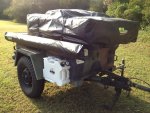 IMG_0408.jpg577 KB · Views: 2,038
IMG_0408.jpg577 KB · Views: 2,038 -
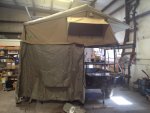 IMG_0267.jpg518.8 KB · Views: 1,556
IMG_0267.jpg518.8 KB · Views: 1,556 -
 IMG_9491.jpg554.6 KB · Views: 2,031
IMG_9491.jpg554.6 KB · Views: 2,031 -
 IMG_9490.jpg565.7 KB · Views: 8,582
IMG_9490.jpg565.7 KB · Views: 8,582 -
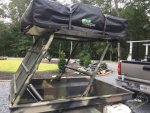 IMG_9489.jpg580.3 KB · Views: 1,437
IMG_9489.jpg580.3 KB · Views: 1,437 -
 IMG_9482.jpg562.3 KB · Views: 1,500
IMG_9482.jpg562.3 KB · Views: 1,500 -
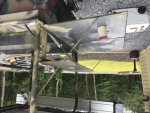 IMG_9486.jpg581.8 KB · Views: 1,371
IMG_9486.jpg581.8 KB · Views: 1,371 -
 IMG_9487.jpg576.5 KB · Views: 1,393
IMG_9487.jpg576.5 KB · Views: 1,393 -
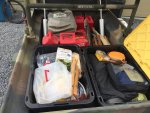 IMG_9477.jpg548 KB · Views: 1,369
IMG_9477.jpg548 KB · Views: 1,369
Last edited:



